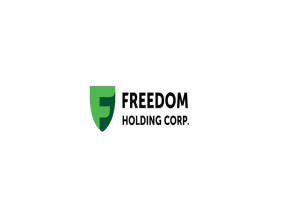Highlights:
- Beneficial ownership refers to the person who enjoys the benefits of ownership, even if title is held by another.
- It is often seen in risk arbitrage and various financial strategies.
- While legal, beneficial ownership can be exploited for illegal purposes, such as in the case of "parking violations."
Beneficial ownership is a financial and legal term that refers to a situation in which a person enjoys the benefits of ownership of an asset, even though the title to that asset may be registered under another name. This concept is widely applied in various financial transactions, including risk arbitrage, and plays a crucial role in understanding asset control and ownership structures. However, while beneficial ownership itself is not inherently illegal, it can be abused, leading to potential legal and regulatory challenges.
The Fundamentals of Beneficial Ownership
At its core, beneficial ownership indicates the true owner of an asset, even though that asset’s legal title might be held by someone else, often referred to as the "nominee" or "registered owner." This situation can arise in various contexts, such as when assets are held in trust or through complex corporate structures. The individual or entity that benefits from the asset—receiving dividends, profits, or control—without holding the official title is the beneficial owner.
This distinction is important in various financial sectors, especially in banking, securities, and investment management. The complexity of ownership structures often requires authorities to differentiate between the legal owner (the name registered on official documents) and the beneficial owner (the individual or entity receiving the financial benefits).
Beneficial Ownership in Risk Arbitrage
Risk arbitrage is one area where beneficial ownership plays a prominent role. Risk arbitrageurs typically aim to profit from mergers and acquisitions (M&A), where the acquisition price of a target company is expected to be higher than its market price. In these scenarios, beneficial ownership may shift between parties involved in the trade or transaction, with the actual control or profit from ownership held by someone other than the legal titleholder.
For example, if a company is the target of an acquisition, investors involved in risk arbitrage may buy shares of that company. While these investors may not have legal title to the shares in their own names, they derive the benefits (such as profits from the acquisition) based on the structure of the trade, making them the beneficial owners. In such cases, beneficial ownership allows participants to leverage positions without taking on the official title or facing regulatory scrutiny tied to the legal ownership.
Legal and Regulatory Framework
The concept of beneficial ownership is essential in maintaining transparency in financial markets. Regulatory bodies and tax authorities often seek to identify beneficial owners to ensure proper taxation, compliance with anti-money laundering (AML) laws, and to prevent illegal activities such as fraud, tax evasion, or money laundering.
International regulatory frameworks, including those set by the Financial Action Task Force (FATF), aim to increase the transparency of beneficial ownership across financial systems. Countries and jurisdictions are increasingly adopting laws that require companies and financial institutions to disclose the identity of beneficial owners. This is especially important in jurisdictions with strong financial secrecy laws, where the concealment of ownership can hinder efforts to combat financial crimes.
Abuse and Misuse of Beneficial Ownership
Despite its legitimate uses, beneficial ownership can be exploited for illegal or unethical purposes. One of the most notorious examples of this abuse is known as "parking," which can occur in several forms, including what is commonly referred to as a "parking violation."
In this context, "parking" involves transferring the legal ownership of an asset to another party in order to shield the true owner’s identity. For instance, a person may want to hide their ownership of a significant asset for reasons such as avoiding taxes or circumventing regulations. The true owner may engage a nominee to hold legal title, while retaining all the financial benefits, including any profits or control.
This practice is often scrutinized in the realm of tax enforcement, anti-money laundering efforts, and compliance investigations. While the use of beneficial ownership in itself is not illegal, hiding ownership behind complex structures or using nominees to disguise true control is illegal in many jurisdictions.
Challenges in Identifying Beneficial Ownership
One of the main challenges in dealing with beneficial ownership is the complexity of corporate structures. Ownership can be obscured through layers of entities, trusts, and partnerships, making it difficult for authorities and regulatory bodies to identify the true beneficial owners. This is particularly true in international business, where entities may be registered in jurisdictions with lax regulations on disclosure.
To address these challenges, global financial institutions and governments are focusing on improving transparency in beneficial ownership records. Many countries now require companies to disclose their beneficial owners in official registries, and international cooperation among financial regulatory agencies is improving.
Conclusion
Beneficial ownership is a concept that plays a crucial role in various financial markets, providing clarity on who truly enjoys the benefits of an asset, even when the legal title is held by someone else. While it is often used in legal and legitimate contexts such as risk arbitrage, it can also be abused for illegal purposes, particularly in cases where the ownership is hidden through complex structures or "parking" practices. Legal frameworks are evolving to address these challenges, with a growing focus on transparency and identification of the true owners behind assets. As the global economy becomes more interconnected, ensuring transparency in beneficial ownership is essential for maintaining the integrity and accountability of financial markets.





